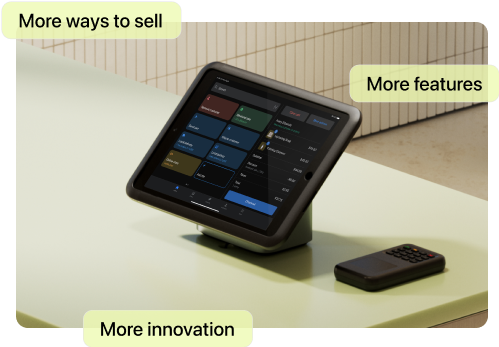Imagine you place an order online. It takes only a few clicks since your information is saved on your account. But before you can celebrate the efficient checkout process, you realize you forgot to change your old address. Instead of canceling your order and starting over, you email customer service and ask for help modifying your address. You quickly receive a message saying it’ll be no problem and that your order will arrive in three to five business days. Now, you can finally get excited.
In today’s competitive landscape, it’s not just your business’ offerings that help you stand out. A positive customer experience paired with excellent customer service can foster lasting relationships with customers.
While they can each increase customer satisfaction, their roles differ within an organization. Learn about the key differences.
What is customer experience?
Customer experience (CX) refers to every interaction a customer has with your brand throughout the entire customer journey. Those interactions include everything from first becoming aware of your product or service to post-purchase support.
An excellent overall customer experience plays an important role in shaping your customer’s perception of your brand and fostering customer loyalty. The more positive the perception is, the higher chance of repeat customers and repeat business. In fact, Bain & Company found that just a 5% increase in customer retention could translate to a 25% increase in profit.
A positive customer experience is really built and founded on three key pillars:
-
People. Aligning the right people for particular jobs can improve employee satisfaction. This makes managing customer experience easier and more efficient, translating into higher customer satisfaction.
-
Product. Whatever you are selling, its quality should match your customer experience. Make sure your product is rooted in market research and solving customer problems.
-
Process. Regularly assessing your customer experience strategy can enhance efficiency, address customer needs quickly, and improve on touchpoints throughout the customer journey.
Examples of excellent customer experience in action
These brands stand out from the pack, in part because they provide a clear and positive customer experience:
-
Cowboy e-bikes. Belgian-based Cowboy e-bikes has several touchpoints throughout its shopping experience that go beyond simply selling a bike. Customers can schedule a test ride and rides are gamified through a companion app to keep customers engaged.
-
Maguire shoes. This shoe retailer guides customers to the perfect purchase by including fit guides for different-sized feet. It also has tips for maintaining your shoes and lookbooks to help you find the perfect style.

Free Customer Journey Map Template
Your customers know why they’re engaging with your brand. But do you know what they’re going through? Use this free template to craft a shopping experience they’ll love.
What is customer service?
Customer service refers to any touchpoints on the customer journey that involve answering questions or concerns about your product or service. It often involves direct interactions with customers but can also sometimes be automated with the help of AI and chatbots. No matter which method you offer, making sure your customers feel heard can help ensure you deliver great customer service.
Customer service can be offered through several channels, including:
-
In-person. If you have a retail store, employees can go beyond handling returns and exchanges by offering help throughout the purchasing process.
-
Phone. This usually involves a service representative answering customer phone calls about any issues they’re having. Kindness, empathy, and active listening are key to delivering great customer service by phone.
-
Online. Whether it’s through email, live chat, AI-powered chatbots, social media DMs, or messaging platforms like WhatsApp, digital forms of customer service can offer the speed and convenience many customers expect.
-
Customer self-service.Self-serve tools and resources—like FAQ pages, chatbots, or how-to videos—help site visitors answer customer queries on their own. Ideally, self-service tools are paired with the option of talking to a person.
Examples of exceptional customer service in action
Good customer service means you understand your customers and make them feel heard when they reach out.
Here are a few stand-out examples of brands doing just that:
-
Chewy. Pet supplier Chewy is famous for its personable customer service, which is evident in its training process. It provides weeks of training to ensure its support team can provide personable and empathetic customer care.
-
Liquid Death. This water company excels in maintaining on-brand communication, even on its FAQ page. There it provides clear answers with a hint of surprise and delight in the copy, fostering customer loyalty.
-
Apple. The tech company is well-known for its excellent customer service, offering free and immediate support over the phone, chat, and in-person at its branded Genius Bar.
Customer experience vs. customer service: What’s the difference?
You may be thinking there’s a lot of overlap between customer service and customer experience, and you’re not wrong. Both customer service and customer experience work together to meet customer expectations, answer concerns, and lead to happy customers.
However, parsing the differences between customer service vs. customer experience comes down to the level of detail. Customer service can be looked at as a smaller section within the overall customer experience that’s focused on single problem-solving interactions. Customer experience, on the other hand, is focused more on tying all the interactions together to elevate the whole customer journey.
Let’s dive into the key differences:
Ownership
Which teams in the company generally own customer service and customer experience?
Customer service
Answering complaints is generally handled by the customer service team to resolve specific issues. However, outstanding customer service is generally founded on excellent customer service team training that empowers each customer service rep to communicate effectively and resolve conflicts confidently.
Customer experience
Customer experience management is a company-wide effort including all teams dialing in every customer touchpoint. It’s important to ensure open lines of communication between marketing, sales, creative, product, and the customer service team. This ensures everyone is working together to deliver a seamless customer experience.
Process
A big difference between customer service and customer experience is how they approach customer care. Customer service is generally more reactive, while customer experience is an opportunity to be proactive about customer expectations.
Customer service
Reactive interactions can include taking customer calls about product issues and providing a refund, answering customer inquiries and providing hands-on technical support. It can also include reaching out to customers who have left negative comments on social media or review sites.
Customer experience
A proactive approach to delivering a high-quality experience usually involves leveraging customer data to identify and address problems before they happen. This might include improving the shopping experience with personalized recommendations or streamlining a lengthy checkout process to reduce cart abandonment.
Metrics
Customer service metrics generally measure how quickly and efficiently you can help customers with specific issues. They can help you identify where you’re doing well and where you need to improve poor customer service:
-
Response time. This is the time between when a customer reaches out and when a customer service rep responds. Calculate your response time from email, social media, phone calls, and live chats to see benchmarks and to set new ones.
-
Ticket volume. Support tickets are customer interactions with any of your support tools. By using an automated ticketing system like Zendesk, you can identify where service quality might need improvement.
-
Customer effort score (CES).CES is a common customer feedback survey on how easy or difficult certain tasks are on the customer journey. A high CES score often leads to a low customer churn rate and happier customers.
-
Resolution rates. Resolution rate is a good indicator of how willing customers are to come back for repeat purchases. Calculated by dividing your total number of tickets by your total resolved tickets.
Metrics that measure customer experience generally show how well your various channels are building long-lasting relationships and customer loyalty. Some common metrics can include:
-
Net Promoter Score (NPS).NPS is a customer satisfaction metric that surveys current customers with the standard question: On a scale of 0 to 10, how likely are you to recommend us to a friend?
-
Customer satisfaction score (CSAT). A common metric from a survey that measures exactly what it sounds like—customer feedback on their satisfaction with a product or service.
-
Customer retention rate.Customer retention measures the percentage of customers who keep coming back for repeat purchases over a certain amount of time.
-
Customer lifetime value (CLV).CLV measures the net profit you could receive throughout a relationship with a customer. Knowing who your best customers are can help you better identify an effective target audience.
Customer interaction frequency
Customer experience is a constant factor throughout the customer journey. Customer service is often limited to when customers have questions or concerns (ideally infrequently). You could consider customer experience as your “always on” factor, enhancing interactions from initial awareness all the way through post-purchase support.
Customer experience vs. customer service FAQ
What is the difference between customer experience vs. customer service?
Customer service is when a customer interacts with your brand to resolve an issue, whether that’s through a chatbot, phone call, or self-serve tool like an FAQ page. Customer experience encompasses every interaction they have with your brand throughout their whole journey.
What are the 3 Ps of customer experience?
People, product, and process work together for customer experience management. Hire the right people for specific jobs to improve efficiency and employee satisfaction and focus on the customer experience. Ensure your product is founded on market research, customer data, and solving problems for your target audience. Establish an efficient process to maintain momentum in optimizing your customer experience and iterating to improve it.
What makes for a good customer experience?
Speed, efficiency, and meeting your customer’s emotional needs can lead to excellent customer experience. Customer service also plays an important role within your customer experience to ensure customer issues are resolved to increase customer retention and maintain a competitive advantage.





